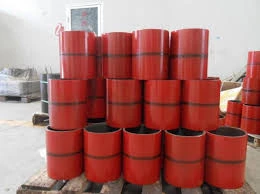- Afrikaans
- Albanian
- Amharic
- Arabic
- Armenian
- Azerbaijani
- Basque
- Belarusian
- Bengali
- Bosnian
- Bulgarian
- Catalan
- Cebuano
- Corsican
- Croatian
- Czech
- Danish
- Dutch
- English
- Esperanto
- Estonian
- Finnish
- French
- Frisian
- Galician
- Georgian
- German
- Greek
- Gujarati
- Haitian Creole
- hausa
- hawaiian
- Hebrew
- Hindi
- Miao
- Hungarian
- Icelandic
- igbo
- Indonesian
- irish
- Italian
- Japanese
- Javanese
- Kannada
- kazakh
- Khmer
- Rwandese
- Korean
- Kurdish
- Kyrgyz
- Lao
- Latin
- Latvian
- Lithuanian
- Luxembourgish
- Macedonian
- Malgashi
- Malay
- Malayalam
- Maltese
- Maori
- Marathi
- Mongolian
- Myanmar
- Nepali
- Norwegian
- Norwegian
- Occitan
- Pashto
- Persian
- Polish
- Portuguese
- Punjabi
- Romanian
- Russian
- Samoan
- Scottish Gaelic
- Serbian
- Sesotho
- Shona
- Sindhi
- Sinhala
- Slovak
- Slovenian
- Somali
- Spanish
- Sundanese
- Swahili
- Swedish
- Tagalog
- Tajik
- Tamil
- Tatar
- Telugu
- Thai
- Turkish
- Turkmen
- Ukrainian
- Urdu
- Uighur
- Uzbek
- Vietnamese
- Welsh
- Bantu
- Yiddish
- Yoruba
- Zulu
casing and tubing connections
Casing and Tubing Connections An Overview
In the oil and gas industry, the extraction of hydrocarbons requires sophisticated technology and equipment designed to ensure the efficient, safe, and productive operation of wells. Among these technologies, casing and tubing connections play a crucial role in maintaining the structural integrity of a well and optimizing production efficiency. This article aims to provide an overview of casing and tubing connections, including their definitions, types, applications, and importance in drilling operations.
Understanding Casing and Tubing
Casing and tubing are essential components of the well construction process. Casing refers to the large-diameter pipes that are inserted into the drilled hole, providing support to the wellbore and protecting it from collapse. It also isolates different geological formations to prevent fluid migration, thereby maintaining the integrity of the well and protecting groundwater supplies.
On the other hand, tubing is the smaller-diameter pipe that runs through the casing and is used to transport hydrocarbons from the production zone to the surface. Tubing is designed to withstand the pressure of the produced fluids and often comes with specific coatings and materials to prevent corrosion and wear.
Types of Connections
The connections made between casing and tubing are crucial for ensuring the long-term viability of a well. There are several types of connections commonly used in the industry
1. Threaded Connections These are the most traditional type, involving a screw-like mechanism that joins lengths of casing or tubing. While they are easy to install and disconnect, their vulnerability to galling and mechanical fatigue can be a concern.
casing and tubing connections

2. Welded Connections These connections involve welding the ends of the pipes together. This method provides a strong and leak-proof connection, ideal for high-pressure scenarios, but it lacks the flexibility of threaded connections.
4. Hydraulic Connections These are increasingly popular due to their ability to handle high pressures and their capacity to prevent leaks. Hydraulic connections typically utilize seals and can adapt to variations in temperature and pressure.
Importance of Proper Connections
The integrity of casing and tubing connections significantly impacts the overall success of drilling operations. A defective connection can lead to catastrophic failures, including blowouts, leaks, or even total abandonment of a well. Therefore, it is essential that these connections are designed, tested, and installed to the highest industry standards.
Additionally, maintenance and inspection of casing and tubing connections are critical parts of well management. Regular inspections can identify wear, corrosion, or other issues before they result in serious problems. Innovative technologies, such as non-destructive testing methods, can be employed to assess the condition of connections without compromising the integrity of the equipment.
Conclusion
In summary, casing and tubing connections are vital components in the oil and gas industry, serving as the lifeblood of well integrity and efficiency. Understanding their types, applications, and importance helps ensure the safe extraction of hydrocarbons while minimizing risks to operatives and the environment. As technology evolves, the development of new materials and connection methods will continue to enhance the reliability and performance of these essential components in the ever-challenging landscape of oil and gas extraction.
-
Tubing Pup Joints: Essential Components for Oil and Gas OperationsNewsJul.10,2025
-
Pup Joints: Essential Components for Reliable Drilling OperationsNewsJul.10,2025
-
Pipe Couplings: Connecting Your World EfficientlyNewsJul.10,2025
-
Mastering Oilfield Operations with Quality Tubing and CasingNewsJul.10,2025
-
High-Quality Casing Couplings for Every NeedNewsJul.10,2025
-
Boost Your Drilling Efficiency with Premium Crossover Tools & Seating NipplesNewsJul.10,2025







